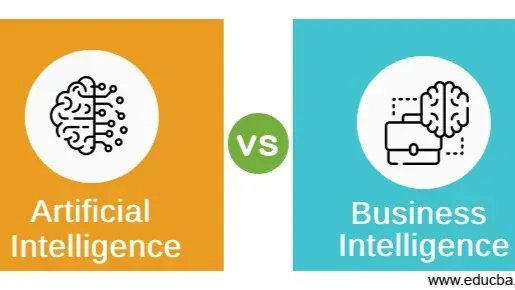✅ Introduction
In today’s rapidly advancing digital world, data drives every major decision. Businesses rely on smart technologies to make sense of huge data volumes. Two powerful technologies that play a key role here are Artificial Intelligence (AI) and Business Intelligence (BI). Although both help organizations make better decisions, they work in very different ways.
This blog explains what AI and BI are, how they differ, and how they can work together for smarter and faster business growth.
🧠 What is Artificial Intelligence (AI)?
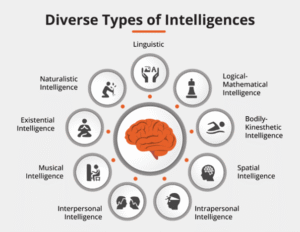
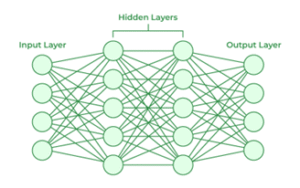
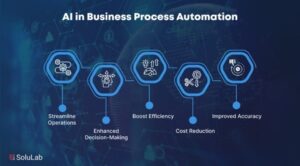
Artificial Intelligence is a technology that enables machines to think, learn, and make decisions like humans. AI is trained using data and advanced algorithms so it can solve problems, identify patterns, make predictions, and even automate tasks without human involvement.
🌟 Key Features of AI
- Learns from experience (Machine Learning)
- Understands text and speech (NLP)
- Recognizes images and objects (Computer Vision)
- Makes predictions and decisions in real-time
- Automates tasks to increase efficiency
📌 Real-World Examples
| Application | Example |
| Digital Assistants | Siri, Alexa, Google Assistant |
| Self-Driving Cars | Tesla Autopilot |
| Healthcare | AI diagnosis tools |
| E-commerce | Personalized product recommendations |
| Banking | Fraud detection systems |
AI focuses on the future — telling what may happen before it happens.
📊 What is Business Intelligence (BI)?
Business Intelligence refers to the analyzing of business data to understand past performance and current trends. BI mainly works with structured data like sales numbers, customer details, financial records, etc.
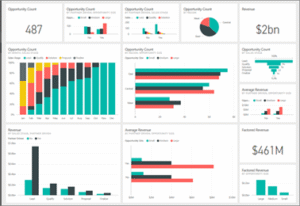
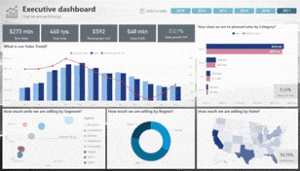
It provides dashboards, reports, and visual analytics to help decision-makers track performance and understand what happened and why.
🌟 Key Features of BI
- Data reporting and visualization
- Data warehousing and analytics
- KPI measurement and performance tracking
- Mainly based on historical and current data
- Human decisions based on BI insights
📌 Real-World Examples
| Application | Example |
| Sales Reports | Monthly revenue dashboards |
| Marketing Analytics | Campaign performance data |
| Finance | Expense tracking insights |
| HR | Employee productivity reports |
BI focuses on the past and present — understanding what already happened.
🆚 AI vs BI: The Core Differences
Here’s a clear comparison to understand the difference:
| Feature | AI ✅ | BI ✅ |
| Data Type | Structured & unstructured (images, text, audio) | Mostly structured data |
| Objective | Prediction + automation | Insight + decision support |
| Time Focus | Future | Past + present |
| Human Involvement | Low — machines can decide | High — humans interpret insights |
| Techniques | ML, NLP, Deep Learning, Computer Vision | Dashboards, Analytics, Visualization |
| Output | Recommendations & automated actions | Charts, KPIs, reports |
✔ In Simple Words
- BI tells what happened.
- AI tells what will happen & what to do.
Example:
BI → “Sales dropped by 10% last month.”
AI → “Sales will increase if we give a 5% discount — applying offer now!”
🤝 How AI and BI Work Better Together
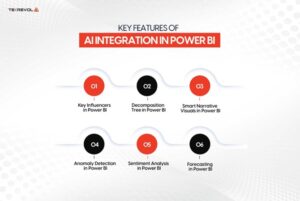

Modern businesses integrate AI with BI to go from insights → immediate intelligent actions.
| Combined Benefit | Result |
| Predictive Analytics | Forecast future demand |
| Smart Dashboards | Automated trend detection |
| Customer Analytics | Personalized products & campaigns |
| Fraud Detection | Real-time risk alerts |
Together they transform raw data into revenue, automation, and competitive advantage.
🏆 Which One Is More Important?
Both AI and BI are important — but they are useful in different stages:
| Stage | BI Role | AI Role |
| Step 1 | Understand business past | Learn patterns from data |
| Step 2 | Identify what needs improvement | Predict & automate actions |
BI explains, AI acts.
Without BI, decisions are blind.
Without AI, decisions are slow.
🚀 Future of Intelligent Decision-Making
The future is moving toward fully automated smart systems where AI uses BI insights to take decisions instantly. Trends include:
- Predictive business planning
- AI-powered data storytelling in dashboards
- Fully automated workflows using robotic process automation (RPA)
- Hyper-personalized user experiences
- AI-driven risk and fraud prevention
Soon, businesses won’t only know what to do, but systems will do it automatically.
📌 Final Summary (Quick Revision)
| Point | AI | BI |
| Purpose | Automate & predict | Analyze & track |
| Focus | Future | Past + Present |
| Data | Complex & unstructured | Structured |
| Action | Automatically taken | Manually decided |
BI = Business Insights
AI = Automated Intelligence
✅ Conclusion
Artificial Intelligence and Business Intelligence are transforming how companies operate. While BI helps leaders understand the performance of the business, AI helps them move faster, predict outcomes, and automate decisions.
Organizations that use both AI + BI together will grow faster, work smarter, and stay ahead in the competitive digital era.

